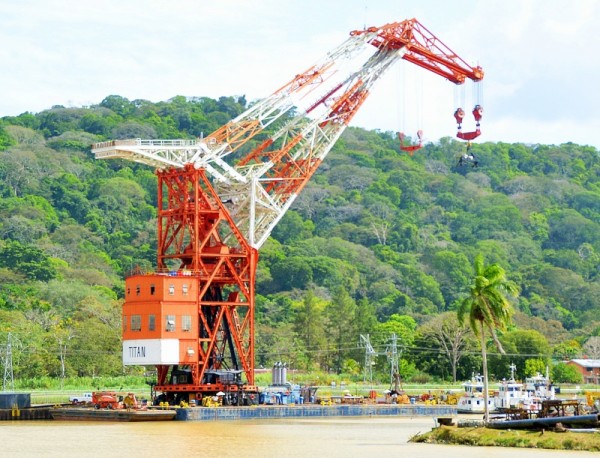
YD-171 “Herman the German” now renamed “La Titan” in service in Panama
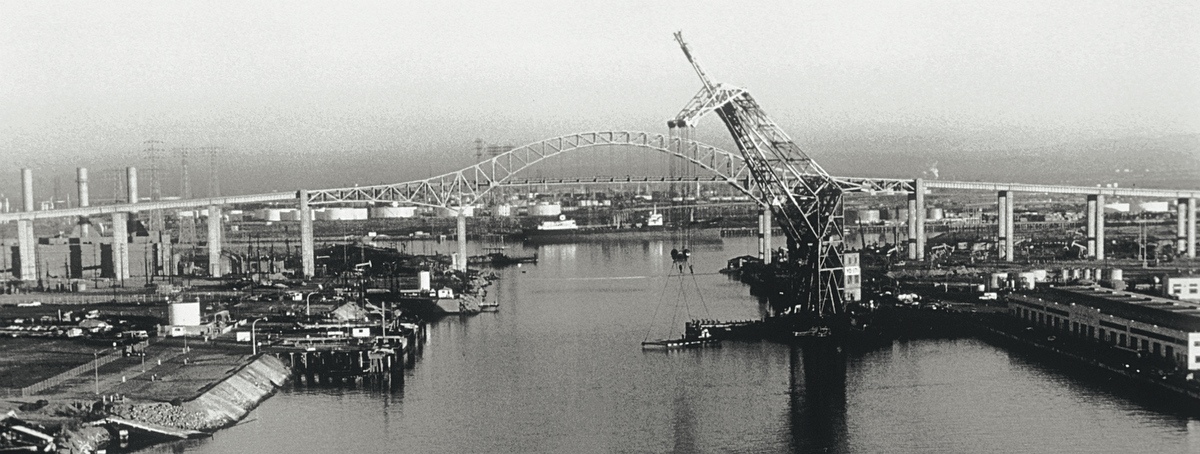
YD-171 “Herman the German” in Long Beach, CA
This is a story about a famous crane, a United States (US) Naval vessel, and the connection between father and son. Anyone working in the shipping industry can appreciate its rich history of modern marvel engineering, pioneers like Malcolm McLean, and the delicate task of moving high volumes of goods from one port to another. All my life, my dad John Albert of Dover, New Hampshire has told me stories of his 21 years in the US Navy as a hull technician. He traveled the world going port to port picking up and dropping off personnel and equipment on the various US Naval vessels he was stationed on.
In June 2017, I traveled as a business analyst for Tideworks Technology to the Port of Long Beach, CA to visit the SSA Marine shipping container terminals PCT, Pier A, and C60. My dad called when I was there and I started to tell him about my trip. He replied with “Have you seen a large crane?” Thinking he was joking, I replied with “Terminal Island is littered with large cranes that service the shipping terminals. Of course, there are large cranes here.” He proceeded to tell me about a crane called Herman the German, a large crane seized from the Nazis by the US Navy following World War II (WWII) and used in Long Beach in 1971 to load a tugboat onto his US Navy amphibious transport dock vessel bound for delivery in Charleston, SC. I was immediately interested in finding out more about this famous crane he called Herman the German.
Sure enough, Herman the German does exist. And is still in use today in Panama though it’s no longer owned by the US Navy. But we will get to that later. First, this story begins in war stricken Germany in 1941. The Nazis ordered the construction of four cranes to be built by Demag A. G. in Bremerhaven, Germany and used by Schwimmkräne in the Baltic Sea, Denmark to lift German U-Boats out of the water for repair and for other heavy-lifting tasks. These were German built 350-ton steel floating cranes. On several occasions during WWII, the cranes were badly damaged by British and American bombers. By the end of the war, three cranes had survived through extensive repairs and one had been sunk in Hamburg, Germany.
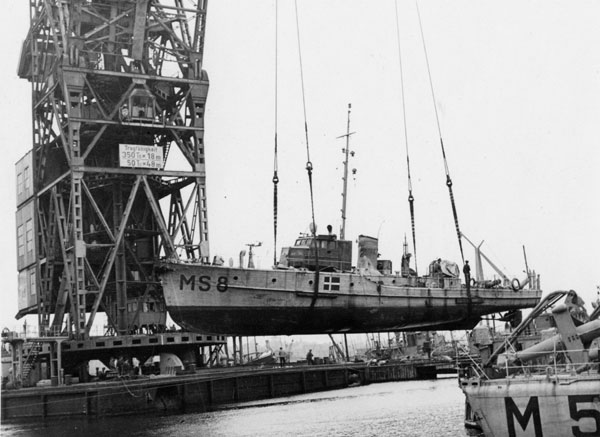
1943: Herman the German salvaging a German M-class minesweeper
The three surviving cranes were seized by allied forces and divvied up by the Tripartite Naval Commission. One went to the Soviet Union, one went to Great Britain, and one went to the US. The US Navy took command of the crane, dismantled it, and began towing it across the Atlantic Ocean on August 14th, 1946. It passed through the Panama Canal and finally arrived at the Terminal Island Naval Shipyard in Long Beach, CA on November 18th, 1946 which was renamed to Long Beach Naval Shipyard (LBNSY) in March 1948.
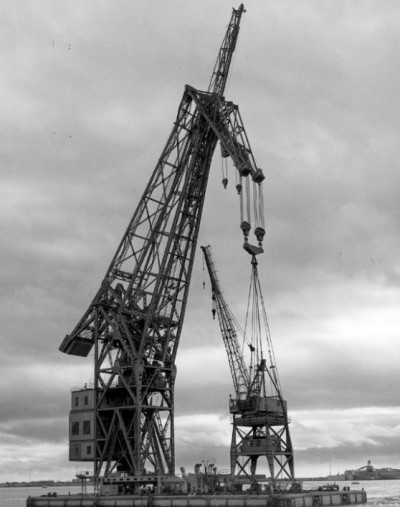
YD-171 “Herman the German” at the LBNSY
Due to the complexity of the crane and its instruction manual being written in German, the US Navy brought several German engineers to Long Beach to help reassemble the crane. In an effort that lasted over two years, the crane was assembled, affixed to the former Kearsarge battleship to form a large floating crane, and officially named USS YD-171 by the US Navy. However, the Navy personnel working with the crane nicknamed it “Herman the German” and the name stuck. On December 31st, 1948, USS YD-171 was placed into service and became an iconic staple in Long Beach.
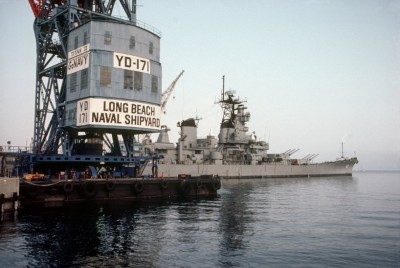
USS YD-171 “Herman the German” lifting a section of steel at the LBNSY
Fast forward to 1971, my Dad was stationed in Seattle, WA and living two streets down from where I currently live on Alki Beach. His crew was assigned to the US Navy’s 12th and final ship of the Austin-class amphibious transport dock vessel named USS Ponce (LPD-15) bearing the motto “The Proud Lion”. LPD-15 was built in Seattle by the Lockheed Shipbuilding and Construction Company, launched in May 1970, and commissioned on July 10th, 1971 in Bremerton, WA.
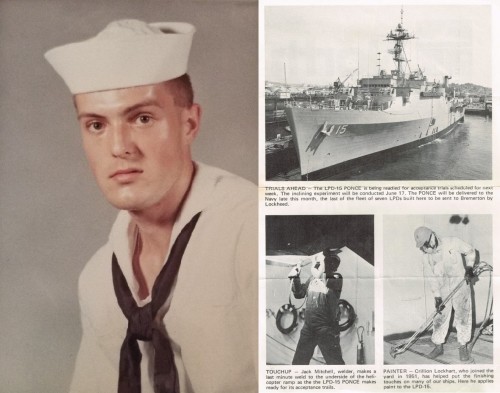
1966 Chicago: John Albert, US Navy, Hull Technician
1970: Magazine article showing the USS Ponce under construction in Seattle
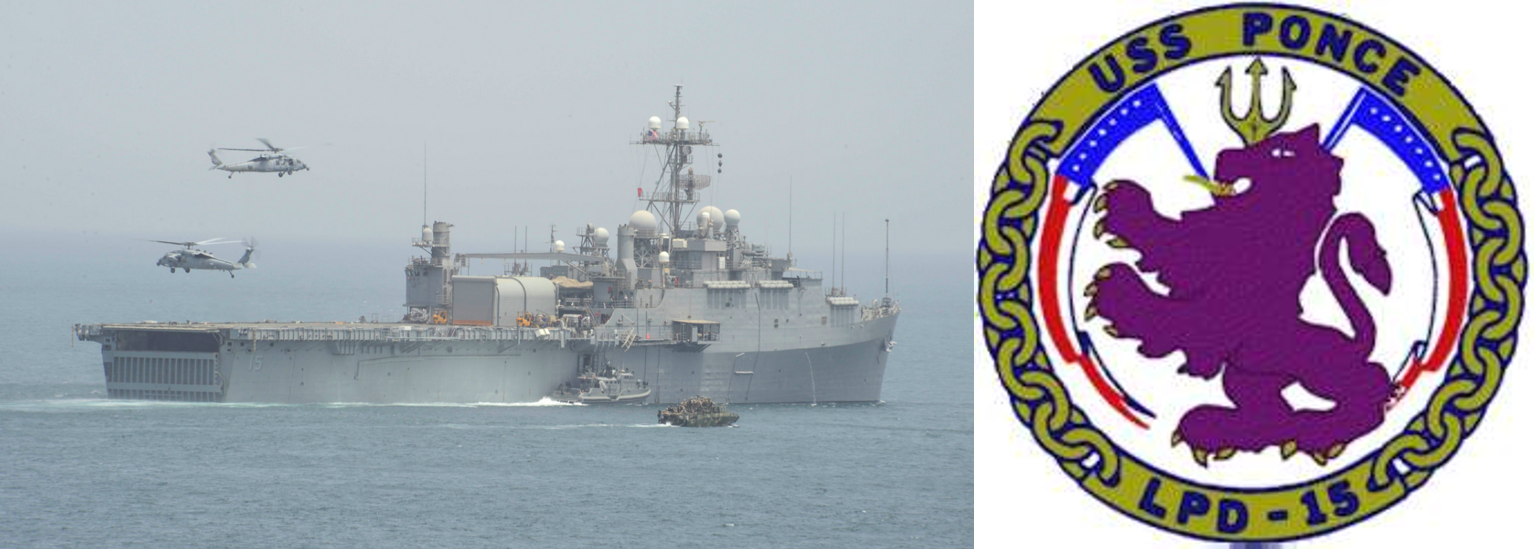
USS Ponce (LCP-15) bearing the motto “The Proud Lion”
On September 1st, 1971, the USS Ponce departed Bremerton on its maiden voyage with my dad aboard headed for its new homeport of Norfolk, VA. Prior to arrival in Virginia, the Ponce’s first mission was to deliver a US Navy ocean going tugboat from the Port of Long Beach to the Port of Charleston, SC. Therefore, the Ponce sailed into Long Beach and tied up diagonally to the famed Herman the German. Shipyard workers at LBNSY floated Herman the German over to the Ponce’s aft, tied up the tugboat, and lifted it aboard the Ponce’s flight deck. My dad recalls Herman the German “picked up the tugboat like it was tin can”. The tugboat had seen action in Vietnam and had been transported to Long Beach. Bullet holes were still present in the hull from the war. The tugboat was lashed to the Ponce’s deck and the vessel set sail leaving Herman the German and Long Beach in their wake.
The USS Ponce had port calls in San Diego, CA, Mazatlán, Mexico, Colon, Panama, Ponce, Puerto Rico, Charleston, SC, and Norfolk, VA. They assisted a distressed vessel that was taking on water in the Pacific somewhere close to the equator, were treated like kings in Ponce, Puerto Rico by the town’s Mayor since the vessel was named after the town, and they successfully offloaded the tugboat in Charleston.
Herman the German operated in LBNSY until September 30th, 1994 when the base closed. During its nearly 50 years in Long Beach, Herman the German’s most notable lifts included Howard Hughes’ H-4 Hercules (the “Spruce Goose”), the underwater habitat SEALAB II, and gun barrels of the USS New Jersey (BB-62). In 1996, Herman the German was sold to the Panama Canal Commission and officially renamed “La Titan”. The large floating crane was moved to Panama aboard the heavy-lift ship Swan departing Long Beach on May 19th, 1996 and arriving in Panama on May 31st, 1996.
La Titan began working the locks in the Panama Canal. Ownership of La Titan changed on December 31st, 1999 to the Panama Canal Authority per the Torrijos-Carter Treaties when the canal reverted to Panama. Recently, La Titan assisted with the Panama Canal expansion project to build the third set of locks which began commercial operation on June 26th, 2016. La Titan is still in operation today.
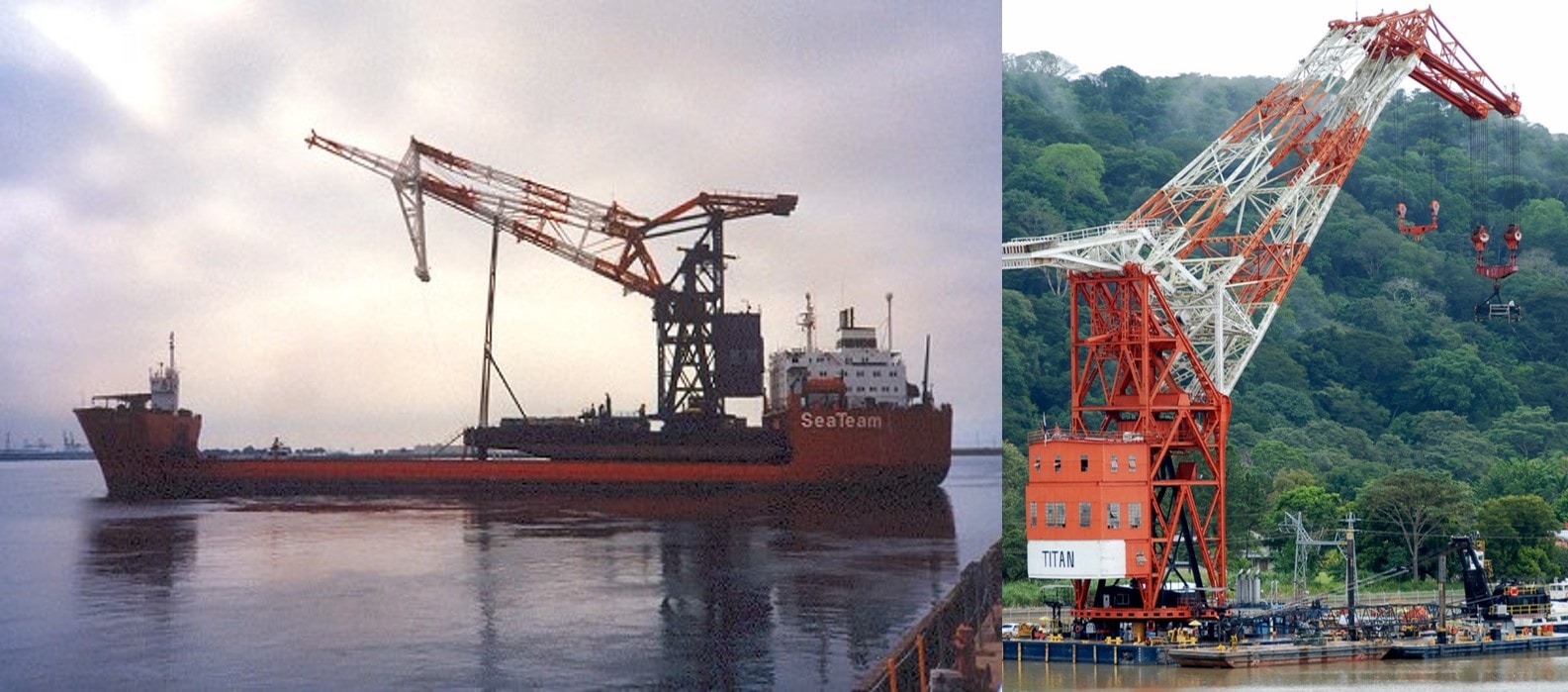
Left: 1996 Herman the German aboard the heavy-lift ship Swan on its voyage to Panama
Right: 2011 Titan in service on the Panama Canal
As for my dad, he was stationed on the USS Ponce until July 1973. He got off Navy Active Duty and finished his Navy career in the Naval Reserve from 1983-1995. The USS Ponce was decommissioned on October 14th, 2017 after 46 years of service and 27 deployments. The Argentine Navy is in talks with the US Government to purchase the USS Ponce to become part of their fleet.
In 2015, I had the chance to see the Spruce Goose with my dad at the Evergreen Air & Space Museum in McMinnville, OR. And earlier this year, while on assignment for Tideworks, I had the awesome opportunity to experience the operation of the Panama Canal during a visit to the Miraflores Locks. Who knew that such a simple question from my dad about a WWII-era crane would lead me on a discovery to so much history, and that my own path would eventually close the loop on an industry icon? I certainly didn’t. And I’m extremely grateful that it did.
Additional connections to this story:
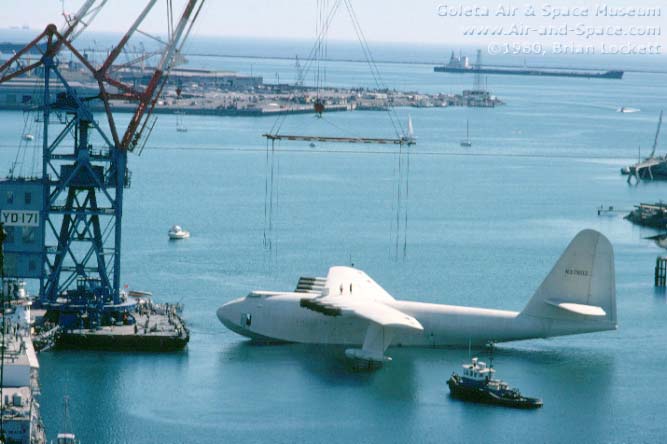
1980: Spruce Goose being lifted by Herman the German in Long Beach, CA
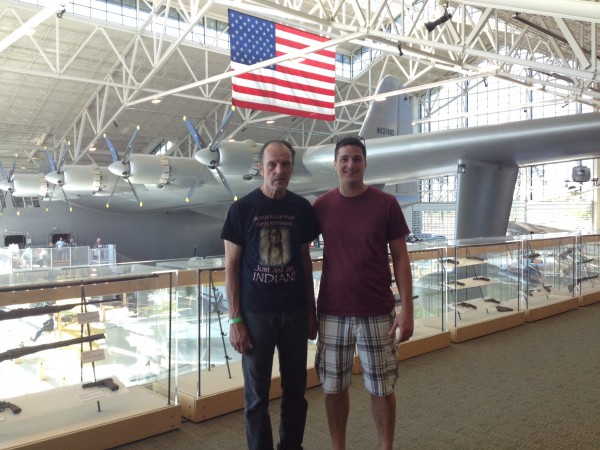
2015: Dad & I visiting the Spruce Goose at the Evergreen Air & Space Museum in McMinnville, OR
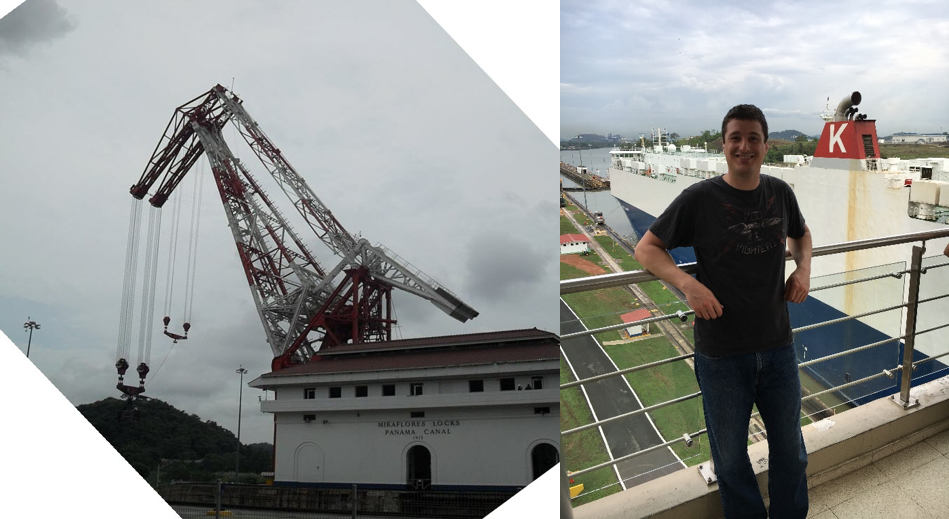
Left: 2005 Titan working at the Miraflores Locks Panama Canal
Right: 2017 I visited the Miraflores Locks Panama Canal
Sources:
https://www.navalhistory.org/2016/05/19/herman-the-german
http://www.panama-guide.com/article.php/20100407111732264
https://www.usni.org/magazines/proceedings/1949-08/navys-colossal-crane
http://www.navsource.org/archives/14/26171.htm
http://portoflongbeach.blogspot.com/2011/04/herman-german.html
https://en.wikipedia.org/wiki/Herman_the_German_(crane_vessel)
http://wikimapia.org/9957480/Titan-Floating-Crane-Panama#/photo/5998588
https://commons.wikimedia.org/wiki/Category:Titan_(ship,_1941)

One of the coolest history lessons I’ve ever received while working here. Thanks!
Awesome post. A wonderful tribute to your father and this globetrotting crane. Thanks for taking the time to research it and thanks for sharing it with all of us. You’re a wonderful writer and a great voice for storytelling. Keep them coming!
Being a Panamanian and also having worked in and visited almost all the places in this amazing tale, it becomes very natural to me feeling both touched but also impressed by how Steven manages to interconnect family, industry, history and legacy. Herman the German lives on as a testimony of how any instrument can turn into a valuable mean of progress being taken care of by the right hands. Oscar